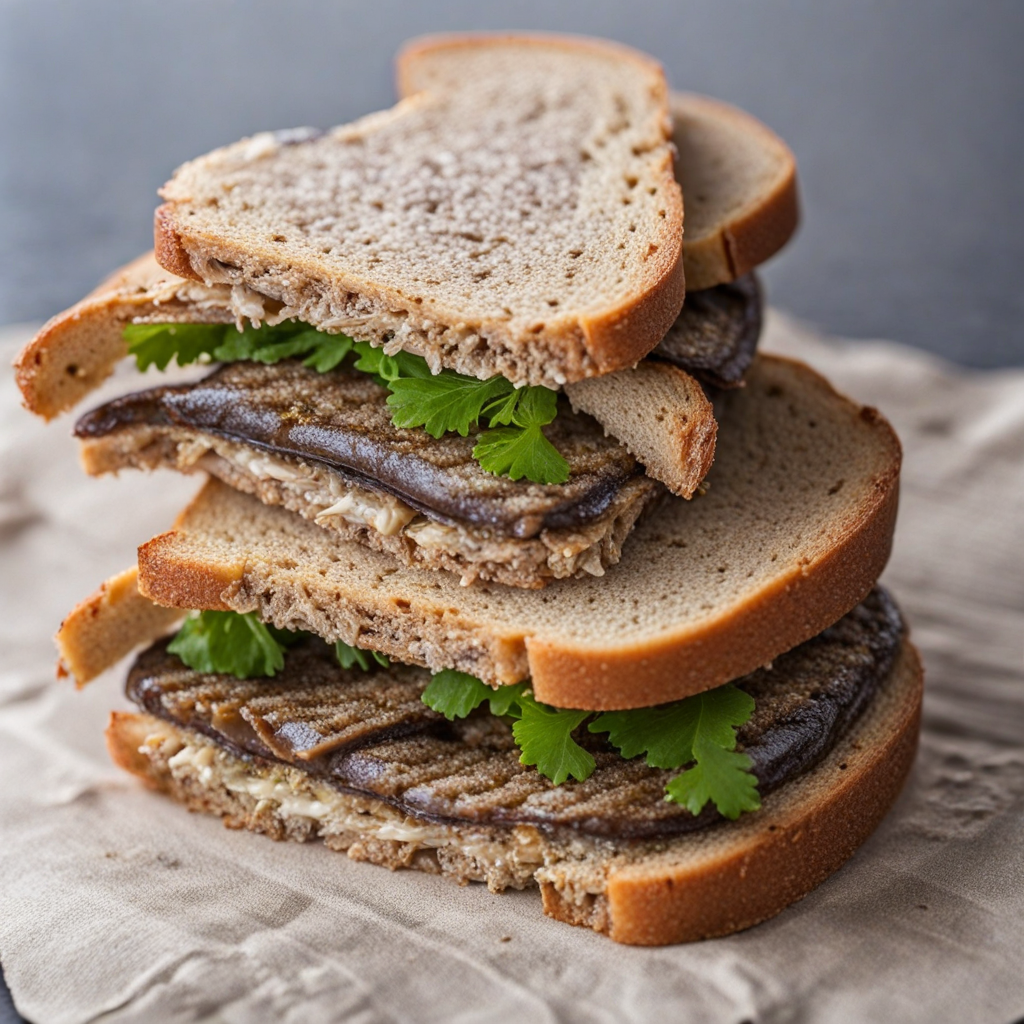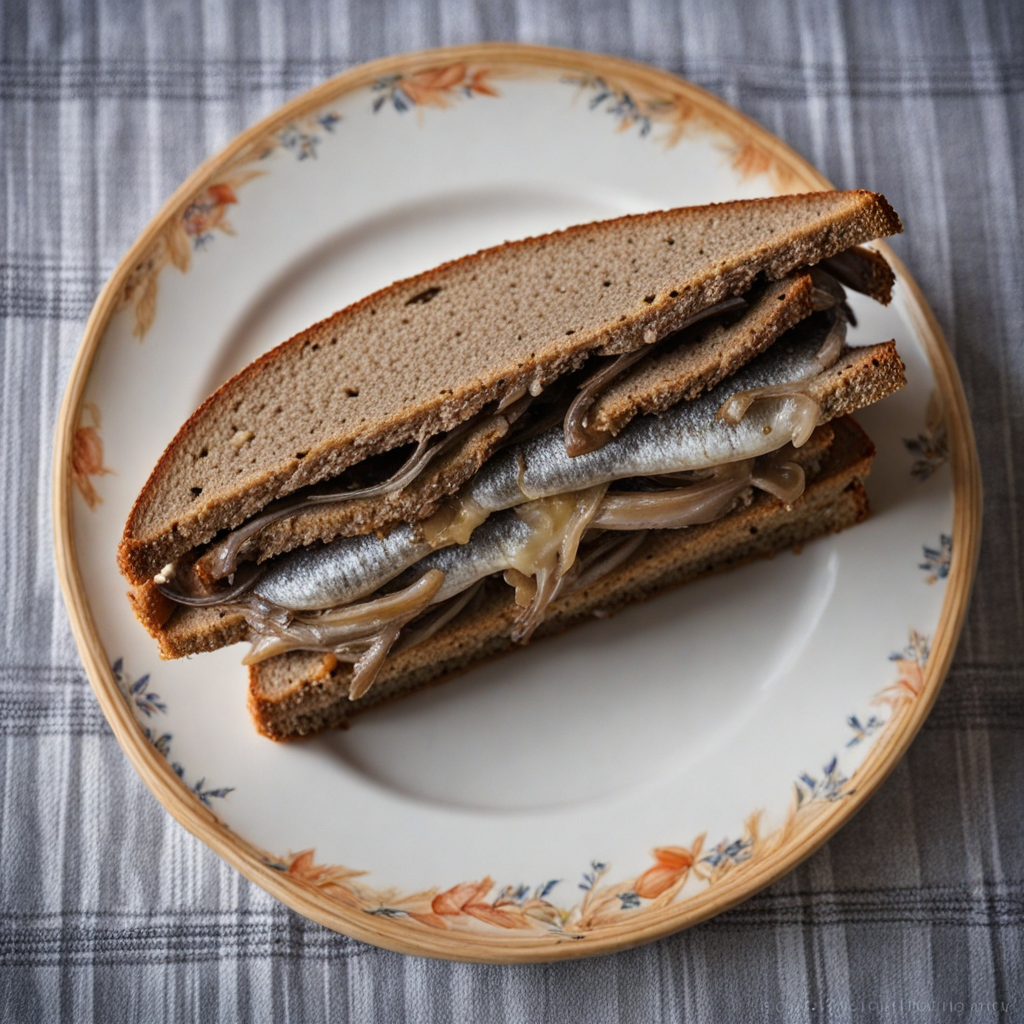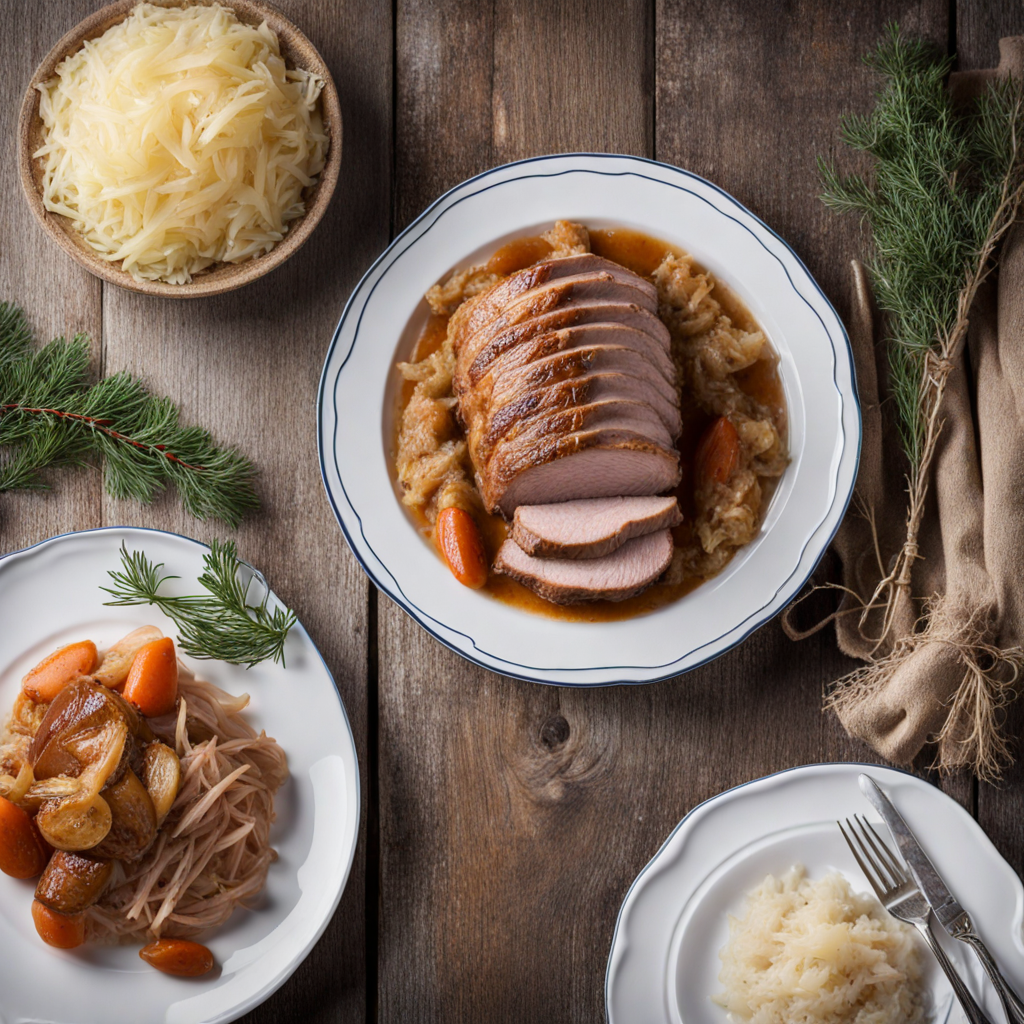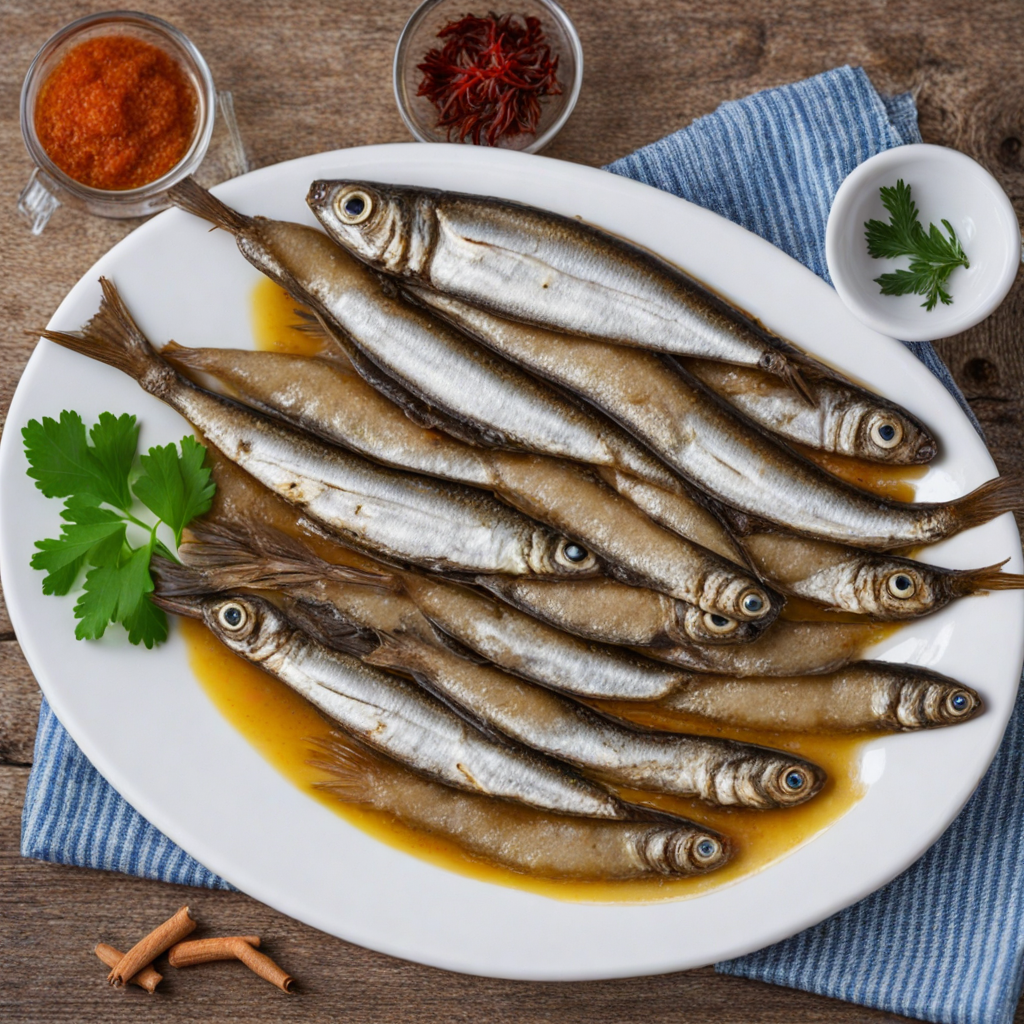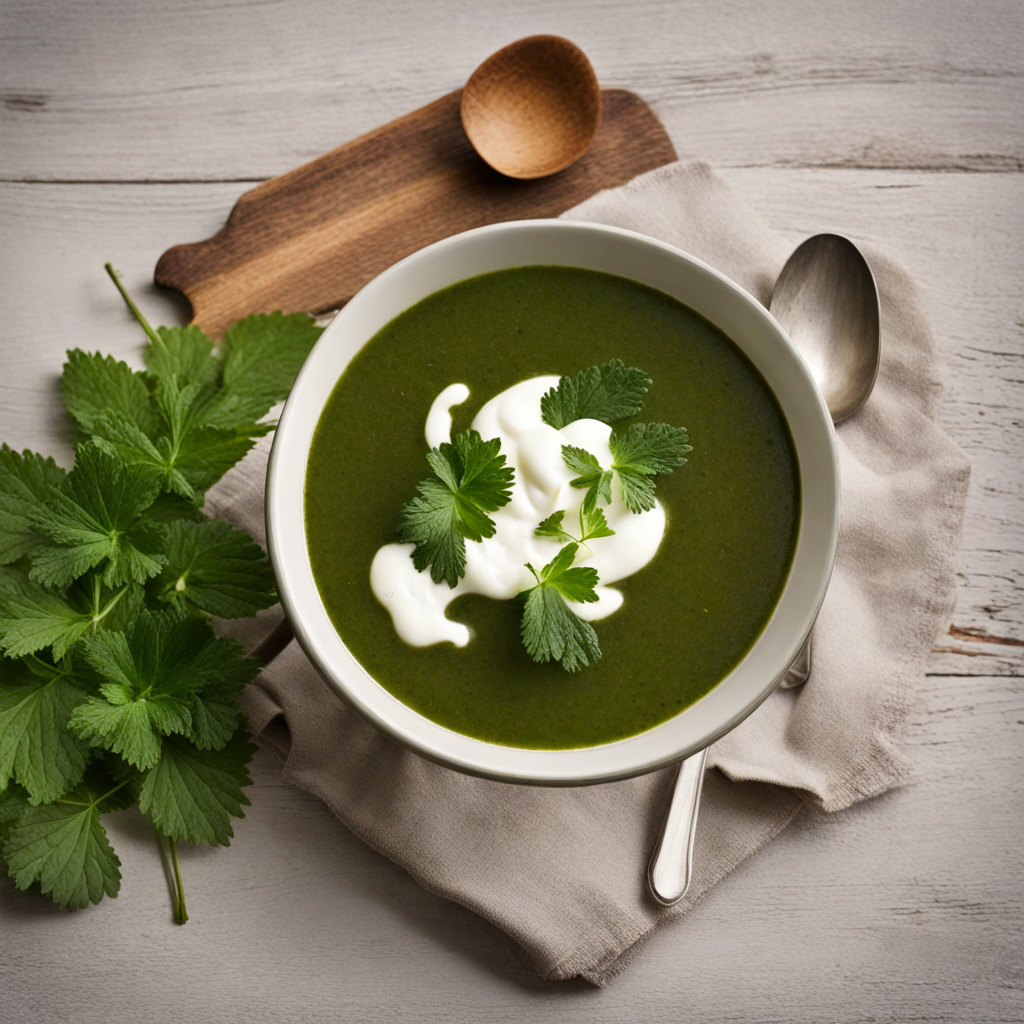Sprat Sandwich
The Sprat Sandwich is a delightful culinary treat originating from Estonia, showcasing the country's rich maritime heritage. At the heart of this sandwich lies the sprat, a small, oily fish that is often smoked or canned, imparting a savory and slightly briny flavor that captures the essence of the Baltic Sea. The fish is typically layered on a slice of dense, dark rye bread, which not only adds a hearty texture but also complements the natural richness of the sprats. The rye's slightly nutty undertones create a perfect balance, making each bite a harmonious blend of flavors. To elevate the taste experience, the Sprat Sandwich is often adorned with a variety of toppings. A generous spread of creamy butter or a tangy mayonnaise enhances the moistness of the fish while adding a velvety texture. Fresh herbs, such as dill or parsley, are commonly sprinkled on top, providing a burst of freshness that cuts through the richness. Some variations may include thinly sliced onions or pickles, offering a sharp contrast that brightens the overall flavor profile and adds a delightful crunch. This sandwich is not just a meal; it’s a representation of Estonian culture and its connection to the sea. Often enjoyed as a snack or in a casual setting, the Sprat Sandwich invites food lovers to explore the unique tastes of Estonia. Each bite transports you to the coastal landscapes of the country, where the flavors of fresh seafood and rustic bread come together in a simple yet satisfying way, making it an essential item for anyone looking to expand their culinary horizons.
How It Became This Dish
The History of Kilusai: A Culinary Gem of Estonia #### Introduction Kilusai, a traditional Estonian dish, embodies the essence of the country’s rich culinary heritage. Often recognized for its simplicity and heartiness, Kilusai is a dish that reflects the agricultural practices, social customs, and cultural narratives of Estonia. While not as widely known outside the region, its significance is profound among Estonian communities, representing a connection to the land and traditions that have shaped the nation. #### Origins of Kilusai The origins of Kilusai can be traced back to the agrarian lifestyle of Estonia, where farming and fishing played crucial roles in the daily life of its inhabitants. The dish primarily consists of rye bread, herring, and a variety of local vegetables, making it a staple among the rural populace. Rye has been a fundamental crop in Estonia for centuries, owing to the harsh climate that favors its growth over other grains. The use of rye bread as a base for Kilusai highlights its importance in Estonian culinary traditions. The herring component of Kilusai is equally significant. Estonia’s extensive coastline along the Baltic Sea has made fish, particularly herring, a vital part of the local diet. Salting and preserving fish were common practices in medieval times, allowing communities to sustain themselves through long winters when fresh produce was scarce. The combination of these ingredients into a single dish likely emerged as a practical solution to utilizing available resources, while also providing a nutritious meal. #### Cultural Significance Kilusai is not just a dish; it is a cultural artifact that represents the communal spirit and shared heritage of Estonia. Traditionally, Kilusai was prepared during gatherings and celebrations, such as Midsummer (Jaanipäev) and Christmas, serving as a reminder of the importance of family and community bonds. The preparation of Kilusai often involved the participation of multiple family members, reinforcing social ties and the passing down of culinary traditions from one generation to the next. In Estonian folklore, food is often imbued with symbolic meanings, and Kilusai is no exception. The dish is associated with abundance and prosperity, making it a fitting choice for festive occasions. During these celebrations, Kilusai would be served alongside other traditional dishes, creating a vibrant tableau of Estonian culinary heritage. The act of sharing Kilusai with loved ones is seen as a gesture of goodwill and hospitality, further embedding the dish within the cultural fabric of Estonia. #### Development Over Time As Estonia navigated through various historical periods, including foreign occupations and independence, the preparation and presentation of Kilusai evolved. In the early 20th century, as Estonia sought to establish a national identity, traditional foods like Kilusai became symbols of resistance against foreign influences. The revival of interest in folk traditions during the national awakening period saw a resurgence of Kilusai, where it was celebrated as a national dish that encapsulated the spirit of Estonian resilience. Post-World War II, Estonia underwent significant changes, including the influence of Soviet culinary practices. While many traditional recipes were adapted to accommodate rationing and availability of ingredients, Kilusai maintained its core essence. The dish became a staple in many households, albeit with variations that reflected the changing times. For instance, the use of locally sourced vegetables became more prominent, aligning with the growing movement toward sustainable and organic farming that emerged in the late 20th century. In the 21st century, as Estonia reestablished itself as an independent nation in 1991, there was a renewed interest in traditional foods, including Kilusai. This revival was part of a broader movement to honor and preserve Estonia's culinary heritage in the face of globalization. Contemporary chefs began to reinterpret Kilusai, experimenting with new flavors while still respecting its traditional roots. The dish has found its way onto modern menus in Tallinn and other urban centers, often served in innovative presentations that highlight its cultural significance. #### Modern Interpretations and Global Recognition Today, Kilusai is celebrated not only as a traditional dish but also as a contemporary culinary experience. Chefs are increasingly using local and organic ingredients, emphasizing the importance of sustainability in food practices. Modern interpretations of Kilusai may include variations such as smoked herring or the inclusion of seasonal vegetables, reflecting the dynamism of Estonian cuisine. Moreover, Kilusai has gained recognition beyond Estonia’s borders, with food festivals and cultural events showcasing Estonian cuisine to international audiences. The dish serves as an ambassador of Estonian culture, educating people about the country’s agricultural history, fishing traditions, and communal values. Culinary tourism has also played a role in promoting Kilusai, with visitors seeking authentic experiences that connect them to the local culture. #### Conclusion Kilusai is more than just a dish; it is a narrative woven into the fabric of Estonian history, culture, and identity. From its humble origins rooted in agrarian practices to its modern-day interpretations, Kilusai continues to symbolize the resilience and richness of Estonian heritage. As Estonia looks toward the future, Kilusai remains a testament to the importance of preserving culinary traditions while embracing innovation, bridging the past with the present in a continuously evolving gastronomic landscape. In a world increasingly dominated by fast food and globalized cuisine, Kilusai stands as a reminder of the power of local ingredients, traditional practices, and the communal spirit that food can foster. As Estonians gather around the table to share this beloved dish, they not only nourish their bodies but also celebrate their shared history, cultural identity, and the enduring legacy of their culinary traditions.
You may like
Discover local flavors from Estonia


